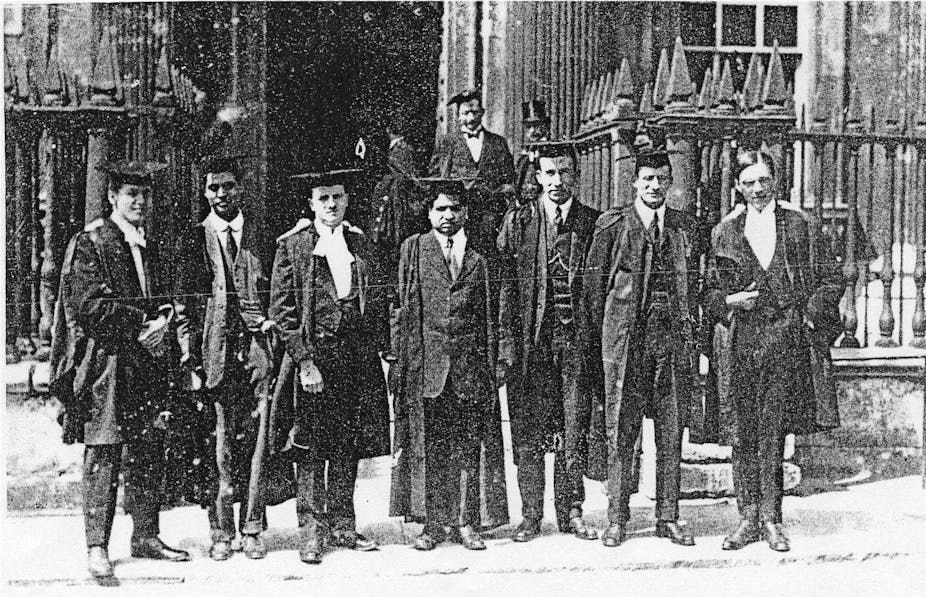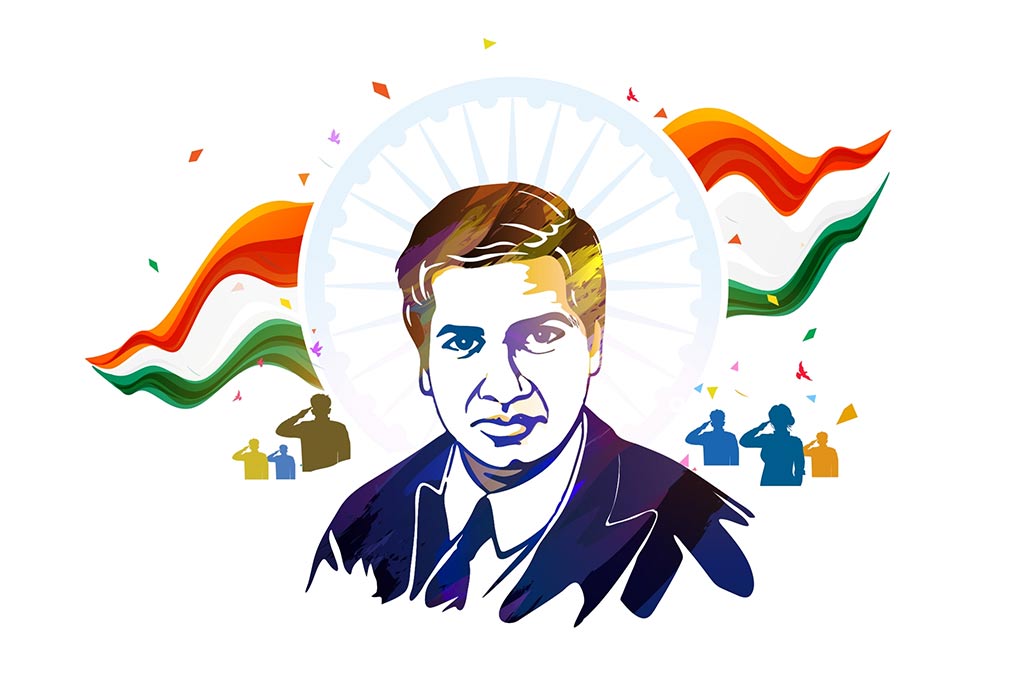

Short Essay: Srinivasa Ramanujan
A couple of short essay examples about Srinivasa Ramanujan.
Table of Contents
Srinivasa Ramanujan Essay Example 1
Srinivasa Ramanujan is a name that echoes in the halls of mathematics. He was an Indian mathematician who made significant contributions to the field of mathematics. His work on number theory, infinite series, and continued fractions was particularly noteworthy. Despite facing numerous obstacles, Ramanujan’s brilliance was recognized by mathematicians in Europe, and he eventually became a Fellow of the Royal Society. In this essay, we will delve deeper into the life and work of Srinivasa Ramanujan.
Srinivasa Ramanujan was born on December 22, 1887, in Erode, a small town in the state of Tamil Nadu, India. From a young age, he exhibited an extraordinary talent for mathematics. He had an innate ability to solve complex equations and problems that were beyond the reach of his peers. However, his formal education was limited, and he was forced to drop out of school due to financial difficulties. Despite this setback, Ramanujan continued to explore mathematics on his own and worked tirelessly to develop his skills.
One of Ramanujan’s most significant contributions to mathematics was his work on number theory. He developed a new theory of partitions that allowed mathematicians to solve problems related to the distribution of integers. His work on the partition function has since become an essential tool in many areas of mathematics. Ramanujan also made significant contributions to the theory of modular forms, elliptic functions, and continued fractions. His work on the Riemann hypothesis, a problem that has eluded mathematicians for over a century, is still being studied today.
Despite his remarkable achievements, Ramanujan faced many challenges during his lifetime. He struggled to gain recognition for his work, and his lack of formal education made it difficult for him to communicate his ideas to other mathematicians. However, his persistence and determination eventually paid off, and his work was recognized by mathematicians in Europe.
In 1913, Ramanujan wrote a letter to the famous British mathematician G.H. Hardy, in which he described some of his work on number theory. Hardy was so impressed by Ramanujan’s work that he invited him to England to work with him at Cambridge University. Ramanujan accepted the invitation, and he spent the next few years in England, where he made significant contributions to the field of mathematics.
Ramanujan’s brilliance was finally recognized by the mathematical community, and he was elected a Fellow of the Royal Society in 1918. This was a significant achievement for an Indian mathematician at the time, and it helped to pave the way for other mathematicians from India and other countries to gain recognition in the field of mathematics.
Sadly, Ramanujan’s life was cut short when he died of tuberculosis at the young age of 32. However, his legacy lives on, and his work continues to be studied and admired by mathematicians around the world. Ramanujan’s story is a testament to the power of human perseverance and the importance of recognizing and nurturing talent, no matter how unconventional it may be.
In conclusion, Srinivasa Ramanujan was a remarkable mathematician who overcame numerous obstacles to make significant contributions to the field of mathematics. His work on number theory, infinite series, and continued fractions remains an essential part of modern mathematics. Despite facing many challenges during his lifetime, Ramanujan’s brilliance was eventually recognized, and he became a Fellow of the Royal Society. His legacy continues to inspire mathematicians around the world, and his story serves as a reminder that talent can come from anywhere and that it is essential to nurture and support it.
Srinivasa Ramanujan Essay Example 2
Srinivasa Ramanujan was a self-taught Indian mathematician who made significant contributions to the field of mathematics. Despite facing significant challenges in his life, including poverty and illness, Ramanujan’s contributions to mathematics have had a lasting impact on the field. In this essay, I will discuss Ramanujan’s life, his work in number theory, infinite series, and continued fractions, and the lasting impact he has had on mathematics.
Srinivasa Ramanujan was born on December 22, 1887, in Erode, a small village in Tamil Nadu, India. He was a self-taught mathematician who had a natural talent for numbers. At the age of 16, Ramanujan discovered a book on advanced trigonometry, and he started working on solving problems in the book. By the age of 18, he had developed his own theorems and formulas. In 1911, Ramanujan sent a letter to the famous British mathematician G. H. Hardy, who recognized his genius and invited him to study at the University of Cambridge.
Ramanujan’s work focused on number theory, infinite series, and continued fractions. He developed many new theorems and formulas, including the Ramanujan prime, Ramanujan theta function, and Ramanujan’s sum. His work on the partition function, which counts the number of ways a number can be expressed as a sum of integers, has had a significant impact on computer science and cryptography. Ramanujan’s work also had a profound influence on the development of modern mathematics, including the study of modular forms and the Langlands program.
Despite facing significant challenges in his life, including poverty and illness, Ramanujan’s contributions to mathematics have had a lasting impact on the field. He died at the age of 32, but his legacy continues to inspire mathematicians around the world. In recognition of his contributions to mathematics, the Indian government declared December 22, Ramanujan’s birthday, as National Mathematics Day in 2012. The Ramanujan Prize, awarded annually by the International Centre for Theoretical Physics in Trieste, Italy, is named in his honor, and the Ramanujan Institute for Advanced Study in Mathematics at the University of Madras is dedicated to his memory.
In conclusion, Srinivasa Ramanujan was a self-taught Indian mathematician who made significant contributions to the field of mathematics. His work focused on number theory, infinite series, and continued fractions, and he developed many new theorems and formulas. Despite facing significant challenges in his life, including poverty and illness, Ramanujan’s contributions to mathematics have had a lasting impact on the field. His legacy continues to inspire mathematicians around the world, and his work remains an important part of modern mathematics.
Srinivasa Ramanujan Essay Example 3
Srinivasa Ramanujan was a self-taught mathematician from India who made significant contributions to Number Theory. His life and work have been an inspiration to mathematicians around the world. Despite facing many obstacles, he was able to establish himself as one of the greatest mathematicians of all time. In this essay, we will explore the life and work of Srinivasa Ramanujan, and how his contributions have had a lasting impact on the field of mathematics.
Srinivasa Ramanujan was born in Erode, a small town in the state of Tamil Nadu, India, in 1887. From a young age, he showed a keen interest in mathematics and was able to teach himself the subject by reading books and working on problems. He was largely self-taught and did not have any formal education in mathematics. Despite this, he was able to make significant contributions to Number Theory, which is the study of the properties of numbers and their relationships.
Ramanujan’s early work focused on the theory of partitions, which is the study of the ways in which a number can be expressed as a sum of other numbers. He was able to develop a number of new results in this area and published his first paper on the subject in 1916. This paper attracted the attention of mathematicians in Europe, who were impressed by the depth and originality of his work.
Despite the initial interest in his work, Ramanujan faced significant challenges in getting his ideas accepted by the mathematical community. Many of his theories were dismissed as being too abstract or lacking in rigor. In order to prove the validity of his ideas, Ramanujan had to work tirelessly, often spending long hours alone in his room working on proofs.
One of the most significant breakthroughs in Ramanujan’s career came when he was able to prove the validity of his theory on the partition function. This theory had been the subject of much debate among mathematicians, but Ramanujan was able to provide a new and elegant proof that convinced many of its validity. This proof established him as one of the leading mathematicians of his time, and his work continued to inspire others for years to come.
Ramanujan’s legacy continues to inspire mathematicians around the world. His contributions to Number Theory have had a lasting impact on the field, and many of his ideas continue to be studied and developed by mathematicians today. In addition to his work in mathematics, Ramanujan was also known for his deep spirituality and his belief in the mystical nature of numbers. This combination of mathematical genius and spiritual insight has made him a unique figure in the history of mathematics.
In conclusion, Srinivasa Ramanujan was a self-taught mathematician from India who made significant contributions to Number Theory. Despite facing many obstacles, he was able to establish himself as one of the greatest mathematicians of all time. His work was initially dismissed by Western mathematicians until he was able to prove the validity of his theories. Ramanujan’s legacy continues to inspire mathematicians around the world, and his contributions to the field have had a lasting impact.
About Mr. Greg
Mr. Greg is an English teacher from Edinburgh, Scotland, currently based in Hong Kong. He has over 5 years teaching experience and recently completed his PGCE at the University of Essex Online. In 2013, he graduated from Edinburgh Napier University with a BEng(Hons) in Computing, with a focus on social media.
Mr. Greg’s English Cloud was created in 2020 during the pandemic, aiming to provide students and parents with resources to help facilitate their learning at home.
Whatsapp: +85259609792
[email protected]

- IAS Preparation
- UPSC Preparation Strategy
- Srinivasa Ramanujan
Srinivasa Ramanujan (1887-1920)
One of the greatest mathematicians of all time, Srinivasa Ramanujan was born in 1887 in the Southern part of India. He is still remembered for his contributions to the field of mathematics. Theorems formulated by him are to date studied by students across the world and within very few years of his lifespan, he made some exceptional discoveries in mathematics.
His biography and achievements prove a lot about him and his struggles to contribute to the field of this subject. All this is also an essential part of the syllabus for aspirants preparing for the upcoming IAS Exam .
The facts, achievements and contributions presented by Srinivasa Ramanujan have not just been acknowledged within India, but also globally by leading mathematicians. Aspirants can also learn about other Indian mathematicians and their contributions , by visiting the linked article.
Srinivasa Ramanujan Biography [UPSC Notes]:- Download PDF Here
Indian Mathematician S. Ramanujan – Biography
Born in 1887, Ramanujan’s life, as said by Sri Aurobindo, was a “rags to mathematical riches” life story. His geniuses of the 20th century are still giving shape to 21st-century mathematics.
Discussed below is the history, achievements, contributions, etc. of Ramanujan’s life journey.
Birth –
- Srinivasa Ramanujan was born on 22nd December 1887 in the south Indian town of Tamil Nad, named Erode.
- His father, Kuppuswamy Srinivasa Iyengar worked as a clerk in a saree shop and his mother, Komalatamma was a housewife.
- Since a very early age, he had a keen interest in mathematics and had already become a child prodigy
Srinivasa Ramanujan Education –
- He attained his early education and schooling from Madras , where he was enrolled in a local school
- His love for mathematics had grown at a very young age and was mostly self-taught
- He was a promising student and had won many academic prizes in high school
- But his love for mathematics proved to be a disadvantage when he reached college. As he continued to excel in only one subject and kept failing in all others . This resulted in him dropping out of college
- However, he continued to work on his collection of mathematical theorems, ideologies and concepts until he got his final breakthrough
Final Break Through –
- S. Ramanujam did not keep all his discoveries to himself but continued to send his works to International mathematicians
- In 1912, he was appointed at the position of clerk in the Madras Post Trust Office, where the manager, S.N. Aiyar encouraged him to reach out to G.H. Hardy, a famous mathematician at the Cambridge University
- In 1913, he had sent the famous letter to Hardy, in which he had attached 120 theorems as a sample of his work
- Hardy along with another mathematician at Cambridge, J.E.Littlewood analysed his work and concluded it to be a work of true genius
- It was after this that his journey and recognition as one of the greatest mathematicians had started
Death –
- In 1919, Ramanujan’s health had started to deteriorate, after which he decided to move back to India
- After his return in 1920, his health further worsened and he died at the age of just 32 years
The life of such great Indians and their contribution in various fields is an important part of the UPSC Syllabus . Candidates preparing for the upcoming civil services exam must analyse this information carefully.
Other Related Links:
Srinivasa Ramanujan Contributions
- Between 1914 and 1914, while Ramanujan was in England, he along with Hardy published over a dozen research papers
- During the time period of three years, he had published around 30 research papers
- Hardy and Ramanujan had developed a new method, now called the circle method , to derive an asymptomatic formula for this function
- His first paper published, a 17-page work on Bernoulli numbers that appeared in 1911 in the Journal of the Indian Mathematical Society
- One remarkable result of the Hardy-Ramanujan collaboration was a formula for the number p(n) of partitions of a number ‘n’
Achievements of Srinivasa Ramanujan
- At the age of 12, he had completely read Loney’s book on Plane Trignimetry and A Synopsis of Elementary Results in Pure and Applied Mathematics , which were way beyond the standard of a high school student
- In 1916 , he was granted a Bachelor of Science degree “by research” at the Cambridge University
- In 1918 , he became the first Indian to be honoured as a Fellow of the Royal Society
- In 1997, The Ramanujan Journal was launched to publish work “in areas of mathematics influenced by Ramanujan”
- The year 2012 was declared as the National Mathematical Year as it marked the 125th birth year of one of the greatest Indian mathematicians
- Since 2021, his birth anniversary, December 22, is observed as the National Mathematicians Day every year in India
The intention behind encouraging the significance of mathematics was mainly to boost youngsters who are the future of the country and influence them to have a keen interest in analysing the scope of this subject.
Also, aspirants appearing in the civil services exam can choose mathematics as an optional and the success stories of IAS Toppers from the past have shown the scope of this subject.
To get details of UPSC 2024 , candidates can visit the linked article.
For any further information about the upcoming civil services examination , study material, preparation tips and strategy, candidates can visit the linked article.

Leave a Comment Cancel reply
Your Mobile number and Email id will not be published. Required fields are marked *
Request OTP on Voice Call
Post My Comment
Good biography
IAS 2024 - Your dream can come true!
Download the ultimate guide to upsc cse preparation.
- Share Share
Register with BYJU'S & Download Free PDFs
Register with byju's & watch live videos.
The man who taught infinity: how GH Hardy tamed Srinivasa Ramanujan’s genius
Professor of Pure Mathematics, University of Cambridge
Disclosure statement
Béla Bollobás is a Fellow of Trinity College Cambridge
University of Cambridge provides funding as a member of The Conversation UK.
View all partners

Throughout the history of mathematics, there has been no one remotely like Srinivasa Ramanujan. There is no doubt that he was a great mathematician, but had he had simply a good university education and been taught by a good professor in his field, we wouldn’t have a film about him .
As the years pass, I admire more and more the astonishing body of work Ramanujan produced in India before he made contact with any top mathematicians. Not because the results he got at the time changed the face of mathematics, far from it, but because, working by himself, he fearlessly attacked many important and some not so important problems in analysis and, especially, number theory – simply for the love of mathematics.
It cannot be understated, however, the role played by Ramanujan’s tutor Godfrey Harold Hardy in his life story. The Cambridge mathematician worked tirelessly with the Indian genius, to tame his creativity within the then current understanding of the field. It was only with Hardy’s care and mentoring that Ramanujan became the scholar we know him as today.

Determined and obsessed
In December 1903, at the age of 16, Ramanujan passed the matriculation exam for the University of Madras. But as he concentrated on mathematics to the exclusion of all other subjects, he did not progress beyond the second year. In 1909 he married a nine-year-old girl, but failed to secure any steady income until the beginning of 1912, when he became a clerk in the Madras Port Trust office on a meagre salary.
All this time, Ramanujan remained obsessed with mathematics and kept working on continued fractions, divergent series, elliptic integrals, hypergeometric series and the distribution of primes. By 1911, Ramanujan was desperate to gain recognition from leading mathematicians, especially those in England. So, at the beginning of 1913, when he was just past 25, he dispatched a letter to Hardy in Cambridge with a long list of his discoveries –- a letter which changed both their lives.
Although only 36 when he received Ramanujan’s letter, Hardy was already the leading mathematician in England . The mathematical scene in England in the first half of the 20th century was dominated by Hardy and another titan of Trinity College, J.E. Littlewood . The two formed a legendary partnership, unique to this day, writing an astounding 100 joint papers. They were instrumental in turning England into a superpower in mathematics, especially in number theory and analysis.
Hardy was not the first mathematician to whom Ramanujan had sent his results, however the first two to whom he had written judged him to be a crank. But Hardy was not only an outstanding mathematician, he was also a wonderful teacher, eager to nurture talent.
Genius unknown
After dinner in Trinity one evening, some of the fellows adjourned to the combination room. Over their claret and port Hardy mentioned to Littlewood some of the claims he had received in the mail from an unknown Indian. Some assertions they knew well, others they could prove, others they could disprove, but many they found not only fascinating and unusual but also impossible to resolve.

This toing and froing between Hardy and Littlewood continued the next day and beyond, and soon they were convinced that their correspondent was a genius. So Hardy sent an encouraging reply to Ramanujan, which led to a frequent exchange of letters.
It was clear to Hardy that Ramanujan was totally exceptional: however, in spite of his amazing feats in mathematics, he lacked the basic tools of the trade of a professional mathematician. Hardy knew that if Ramanujan was to fulfil his potential, he had to have a solid foundation in mathematics, at least as much as the best Cambridge graduates.
It was for Ramanujan’s good that Hardy invited him to Cambridge, then, and he was taken aback when, due to caste prejudices, Ramanujan did not jump at the chance. As a Brahmin , Ramanujan was not allowed to cross the ocean and his mother was totally opposed to the idea of the voyage. When, in early 1914, Ramanujan gained his mother’s consent, Hardy swang into action. He asked E.H Neville, another fellow of Trinity College , who was on a serendipitous trip to Madras, to secure Ramanujan a scholarship from the University of Madras. Neville’s wrote in a letter to the university that “the discovery of the genius of S. Ramanujan of Madras promises to be the most interesting event of our time in the mathematical world …”
Ramanujan sailed for England in the company of Neville, and arrived in Cambridge in April 1914.
Fearless mentoring
I cannot but admire Hardy for his care in mentoring Ramanujan. His main worry was how to teach this astounding talent much mathematics without destroying his confidence. The last thing Hardy wanted was to dent Ramanujan’s fearless approach to the most difficult problems. To quote Hardy:
The limitations of his knowledge were as startling as its profundity. Here was a man who could work out modular equations, and theorems of complex multiplication, to orders unheard of, whose mastery of continued fractions was, on the formal side at any rate, beyond that of any mathematician in the world … It was impossible to ask such a man to submit to systematic instruction, to try to learn mathematics from the beginning once more. On the other hand there were things of which it was impossible that he would remain in ignorance … so I had to try to teach him, and in a measure I succeeded, though I obviously learnt from him much more than he learnt from me.

For almost three years, things went extremely well. In 1916 Ramanujan got his BA from Cambridge and his research went from strength to strength. He published one excellent paper after another, with a great deal of Hardy’s help in the proofs and presentation. They also collaborated on several great projects, and published wonderful joint papers. Sadly, in the spring of 1917 Ramanujan fell ill, and was in and out of sanatoria for the rest of his stay in Cambridge.
By early 1919 Ramanujan seemed to have recovered sufficiently, and decided to travel back to India. Hardy was alarmed not to have heard from him for a considerable time, but a letter in February 1920 made it clear that Ramanujan was very active in research.
Ramanujan’s letter contained some examples of his latest discovery, mock theta functions , which have turned out to be very important. A main conjecture about them was solved 80 years later , and these functions are now seen as interesting examples of a much larger class of mock modular forms in mathematics, which have applications to elliptic curves, Borcherds products , Eichler cohomology and Galois representations – and the nature of black holes.
Sadly, Ramanujan’s recovery was short-lived. His illness returned and killed him, aged just 32, on April 26 1920, leaving him only a short time to benefit from his fellowship of the Royal Society and fellowship of Trinity.
Ramanujan’s death at the height of his powers was a tremendous blow to mathematics. His like may never be seen again, and certainly such a partnership as that which Hardy and Ramanujan built will not either.
- Mathematics
- Cambridge University

Scheduling Analyst

Assistant Editor - 1 year cadetship

Executive Dean, Faculty of Health

Lecturer/Senior Lecturer, Earth System Science (School of Science)

Sydney Horizon Educators (Identified)
Srinivasa Ramanujan | Short Note/Speech
Srinivasa Ramanujan was an Indian mathematician who made significant contributions to the fields of mathematics and number theory. He was born in 1887 in the town of Erode, in the Madras Presidency of British India, and showed an early aptitude for math. Despite having no formal training in mathematics beyond high school, Ramanujan developed his skills through self-study and made several groundbreaking discoveries that earned him recognition in the international mathematical community.
Ramanujan is best known for his work on infinite series, modular forms, and number theory. He made numerous contributions to the development of these fields, including the discovery of new mathematical theorems and identities. His work has had a lasting impact on mathematics and has been widely studied and applied in various fields.
Despite his many accomplishments, Ramanujan faced numerous challenges in his career. He struggled to find academic opportunities and recognition in India, and ultimately had to rely on support from others to pursue his studies. Despite these obstacles, Ramanujan remained dedicated to his work and continued to make significant contributions to mathematics until his untimely death at the age of 32. Today, he is remembered as a pioneer and an inspiration to mathematicians around the world.
Related Articles
Mahatma gandhi | short note/speech, a short speech on india independence day, short speech on teacher’s day, short speech on teacher’s day in india, dr. sarvepalli radhakrishnan | short note/speech, swami vivekananda | short note/speech, leave a comment cancel reply.
Your email address will not be published. Required fields are marked *
Save my name, email, and website in this browser for the next time I comment.
Notify me of follow-up comments by email.
Notify me of new posts by email.
This site uses Akismet to reduce spam. Learn how your comment data is processed .
- Share full article
Advertisement
Supported by
AN ISOLATED GENIUS IS GIVEN HIS DUE
By James Gleick
- July 14, 1987
IN some ways, mathematicians are finally beginning to penetrate the mind of Srinivasa Ramanujan.
One hundred years have passed since Ramanujan was born in the small city of Kumbakonam in southern India. When he died 32 years later, he left a strange, raw legacy, about 4,000 formulas written on the pages of three notebooks and some scrap paper.
Some of the power and originality of Ramanujan's mathematics was understood a few years before his death. His contemporaries saw from the theorems scrawled across his pages that he possessed a genius for calculating the hidden laws and relationships that govern the wilderness of numbers.
But Ramanujan was uneducated in standard mathematics and isolated by geography for most of his productive life. Often his formulas seemed as obscure as they were elegant. He worked in a place of his own and a way of his own, drawing his formulas and theorems from a mental landscape that remained far from the frontier of mathematics as it was seen in his day.
Now his work is flowing into mathematics and science more deeply than could have been imagined a generation ago. Computers, with special programs to manipulate algebraic quantities, have made it possible for more ordinary mathematicians to pick up the trail of his thought. And modern physics, from the superstring theory of cosmology to the statistical mechanics of complicated molecular systems, finds itself turning more and more often to the pure findings of number theory and complex analysis - the worlds of Ramanujan.
So researchers are intensifying a process of forensic mathematics, or mathematical archeology - poring over the rough pages, trying to understand the formulas and prove them. As they learn more of why Ramanujan chose particular paths, they sense a foundation that has not yet been revealed.
''When he pulled extraordinary objects out of the air, they weren't just curiosities but they were the right things,'' said Jonathan M. Borwein of Dalhousie University in Halifax, Nova Scotia, one of many mathematicians who has lately found himself turning to Ramanujan's formulas. ''They are elusive evidence of a theory that's lurking around somewhere that he never made explicit.''
The trail is hard to follow. Out of necessity and then perhaps out of habit, Ramanujan worked in a style that awes and frustrates modern mathematicians. He used a slate, jotting down formulas, erasing them with his elbow, jotting down more, and then recording a result in his precious notebook only when it had reached final form.
The intermediate results, the links of the chain, are lost. Unlike mainstream mathematicians, he felt no need to prove that a result was true. His legacy is simply a set of discoveries. 'A Feel for Things'
''He seems to have functioned in a way unlike anybody else we know of,'' Dr. Borwein said. ''He had such a feel for things that they just flowed out of his brain. Perhaps he didn't see them in any way that's translatable. It's like watching somebody at a feast you haven't been invited to.''
So mathematicians have spent years - often valuable and productive years - proving theorems that Ramanujan knew to be true. Deriving the formulas has often been more illuminating than the formulas themselves. Whole new subdisciplines within mathematics have blossomed around ideas that Ramanujan put forward in a peculiar, stark isolation.
With the special excuse of his centennial year, mathematicians are gathering to discuss the implications of Ramanujan's work at meetings in the United States and India. They have far more raw material to work with than ever before, because the last decade has brought a new effort to find and organize the pages that make up his legacy.
A University of Illinois mathematician, Bruce Berndt, has spent years editing the notebooks, tracking down sources and relationships and, above all, proving as many of the unproved theorems as possible. A mathematician at Pennsylvania State University, George Andrews, has been performing the same task with the so-called Lost Notebook, 130 pages of scrap paper from the last year of Ramanujan's life.
''The work of that one year, while he was dying, was the equivalent of a lifetime of work for a very great mathematician,'' said Richard Askey of the University of Wisconsin, who has collaborated with Dr. Andrews in trying to understand some of Ramanujan's work.
''What he accomplished was unbelievable,'' Dr. Askey said. ''If it were in a novel, nobody would believe it.''
Ramanujan might have died in complete obscurity if he had not written a series of desperate, bold letters to English mathematicians in 1912 and 1913. By then he was 25 years old, working as a $:30-a-year clerk after several years of unemployment, unwilling to put aside his slate and formulas.
His family was Hindu, high-caste but poor. His father and grandfather before him worked as clerks for cloth merchants. Ramanujan was lucky enough to have a fairly good high school education in Kumbakonam, and he began his creative exploration of mathematics after discovering the few outdated and second-rank textbooks in the library there. 'An Unknown Hindu Clerk'
His intellect stood out clearly, but in college at Madras, about 150 miles north of his birthplace, he failed again and again to pass examinations in other subjects. In mathematics itself, he had no teacher. He worked, as the English mathematician Godfrey J. Hardy later said, ''in practically complete ignorance of modern European mathematics.''
Hardy was not the first mathematician to receive a letter from this ''unknown Hindu clerk,'' as he recalled -''at the best, a half-educated Indian.'' But he was the first to understand what the letter contained.
Ramanujan's letters said, in effect, I know the following . . . and I also know this . . . and, by the way, I have discovered this. He offered a carefully chosen selection of his theorems. Most were in the form of identities -statements that some familiar quantity, like pi, was equal to some unfamiliar quantity, or that two unfamiliar quantities were equal.
Hardy examined them with bewilderment. A few struck chords of recognition, he said later; he thought he had proved similar statements himself. Some he thought he could prove if he tried - and he succeeded, although with surprising difficulty.
Other theorems were already known. Still others, however, ''defeated me completely,'' Hardy said in an essay years later. Journey to Cambridge
''I had never seen anything in the least like them before,'' he said. ''A single look at them is enough to show that they could only be written down by a mathematician of the highest class. They must be true because, if they were not true, no one would have had the imagination to invent them.''
Furthermore, Hardy could tell that Ramanujan was holding some things back, offering specific examples of theorems for which he surely must have discovered more general versions. He arranged an invitation to Cambridge University, and in 1913 Ramanujan arrived, leaving his wife behind. He stayed for nearly six years.
The two men collaborated often. Hardy remembered a slight man, of medium height, with eyes through which some light seemed to shine. Ramanujan remained a strict vegetarian, cooking all his own food in his rooms, and when he fell mysteriously ill in 1917, Hardy thought his vegetarianism contributed to his failing health. Shared Fascination
Years later, Hardy took some pains to dispel the idea, perhaps a byproduct of subtle English racism, that Ramanujan was some sort of Asian curiosity - either an ''inspired idiot'' or ''some mysterious manifestation of the immemorial wisdom of the East.'' On the contrary, in Hardy's eyes he was a deliberate rationalist, often shrewd, and not nearly so religious as his dietary habits made him appear.
They shared a fascination with numbers as almost living things, or characters in a story. They thought about round numbers, defined as numbers with only small factors, like 300, 2#2X3X5#2. They worked on the question of how common such numbers are, in strict mathematical terms, and on many problems more difficult to put into words. 'A Very Interesting Number'
One day after Ramanujan fell ill, Hardy visited him in a taxicab and remarked that the cab's number had been rather uninteresting - 1729, or 7X13X19. ''No, it is a very interesting number,'' Ramanujan responded, as Hardy later told the story. ''It is the smallest number expressible as a sum of two cubes in two different ways.'' (It is the sum of 1X1X1 and 12X12X12, and it is also the sum of 9X9X9 and 10X10X10.) Hardy understood and appreciated Ramanujan more than any of his contemporaries. But even he could not see beyond the blinkers of his time and place. To him, Ramanujan's story was ultimately a tragedy - of inadequate education and of genius unguided. When he finally came to assess the younger mathematician's work and its likely influence on the future of his subject, he expressed disappointment.
''It has not the simplicity and the inevitableness of the very greatest work,'' Hardy wrote in 1927. ''It would be greater if it were less strange.''
Few mathematicians accept that assessment today, as strangeness comes into the light and Hardy recedes into Ramanujan's greater shadow.
''Hardy thought it was a shame that Ramanujan wasn't born a hundred years earlier,'' Dr. Askey said. That was the great age of formulas, the era of ground-laying work by such mathematicians as Euler and Gauss. ''My comment is that it's a shame Ramanujan wasn't born a hundred years later,'' he said. ''We're trying to do problems in several variables now - the problems are harder, and it would be marvelous to have somebody with his intuition to help get started.''
Not that his intuition was infallible. Ramanujan made some errors, once claiming to have found a formula for the approximate number of primes less than any given number. No such formula exists. He was too optimistic, and it was the optimism of an earlier time; by the 19th century, mathematicians had learned that some problems could never be solved, but Ramanujan's isolation shielded him from their doubts as much as from their knowledge.
In 1919, increasingly ill, having entered and left a nursing home and several sanitariums, Ramanujan returned to India. He continued to work feverishly, fighting the pain of his mysterious ailment, writing on whatever paper he could find. The next April, at the age of 32, he died. Papers Discovered in 1976
The work of his last year, 130 unlabeled pages, came to rest at the library of Trinity College, Cambridge, where they lay in a box, along with assorted bills and letters, until Dr. Andrews of Pennsylvania State University found them in 1976. This was the Lost Notebook.
''It's a bizarre term to use for something that was in the major library of the major college in England,'' Dr. Borwein said, ''but in terms of people appreciating its contents, it was certainly true.''
Dr. Andrews found that Ramanujan had cleared a path that mathematicians had not succeeded in matching in the intervening half century. Many discoveries concerned a family of identities he called mock theta functions - ''simple assertions in arithmetic,'' as Dr. Andrews put it, although ''their implications are quite profound.'' Seeds of 'Ramanujan's Garden'
Such mathematics has helped drive one of the major new conceptions of theoretical physics, superstring theory, as the physicist Freeman Dyson told a Ramanujan conference last month. ''As pure mathematics, it is as beautiful as any of the other flowers that grew from seeds that ripened in Ramanujan's garden,'' he said.
Another identity was used last year to enable a computer to calculate millions of digits of pi. It converges on the exact value with far greater efficiency than any previous method. Yet, as always, Ramanujan had merely asserted his discovery; only later did Dr. Borwein and his brother, Peter B. Borwein, prove rigorously that those millions of digits really were pi.
The applications of Ramanujan's magical-seeming formulas make mathematicians think that he was mining a deep vein of theory, the full outlines of which are not yet known. But many prefer not to dwell on just how Ramanujan was able to think as he did.
Hardy looked at Ramanujan's origins and saw a crippling neglect by an inadequate educational system cut off from European society. Still, as mathematicians realize now, Ramanujan had a decent high school, a handful of books and the traditions of a culture that allowed him to aspire to a life as a scholar.
Those looking for lessons in his brief, rich life sometimes note that now, one century later, much of the planet lacks that much.
''Ramanujan is important not just as a mathematician but because of what he tells us that the human mind can do,'' Dr. Askey said. ''Someone with his ability is so rare and so precious that we can't afford to lose them. A genius can arise anywhere in the world.'' A Mysterious Formula for Pi Mathematicians find many of Ramanujan's formulas to be both beautiful and obscure. To their surprise, the formula above provides an extremely rapid way to calculate the value of pi, an age-old preoccupation. Only last year, a computer scientist used a version of Ramanujan's formula to calculate pi to 17 million places. Only after this success were mathematicians able to prove why Ramanujan's insight was correct.
Thursday, Late City Final Edition
His stay at Cambridge University lasted just under five years; the article said nearly six. And the mathematician Godfrey Hardy's middle initial was H.
How we handle corrections

- Vishal's account
Essay on Srinivasa Ramanujan – 10 Lines, Short and Long Essay for Children and Students

Key Points to Remember When Writing an Essay on Srinivasa Ramanujan
10 lines on srinivasa ramanujan, paragraph on srinivasa ramanujan, srinivasa ramanujan essay in 100 words, short essay on srinivasa ramanujan’s contribution to mathematics, long essay on srinivasa ramanujan, interesting facts about srinivasa ramanujan you should know, what will your child learn from the essay on srinivasa ramanujan.
When we explore the world of mathematics, some names shine brightly, and one such name is Srinivasa Ramanujan. A genius from India, he has contributed immensely to the world of numbers and equations. This essay on Srinivasa Ramanujan in English aims to bring closer the life, achievements, and dedication of this extraordinary mathematician. Essay writing helps improve comprehension and communication skills , especially when targeted at children and students. It encourages research, clarity of thought, and the articulation of ideas. So, as we delve deep into the essay for children and students, let’s take a moment to appreciate the essence of essay writing and its ability to enhance our understanding of subjects, especially figures as pivotal as Ramanujan.
Writing an essay on a personality as multifaceted as Srinivasa Ramanujan requires a keen understanding of his life, contributions, and significance. Before delving deep into the topic, it’s essential to keep some pivotal aspects in mind to paint a comprehensive and authentic picture of this genius mathematician.
- Historical Context: Understand the era in which Ramanujan lived. This can provide insight into the challenges he faced and the socio-cultural environment of that time.
- Early Life: Highlight his early years, emphasizing his prodigious aptitude for mathematics even as a young boy and the self-study that laid the foundation of his future works.
- Major Contributions: It’s crucial to mention his significant works, like the Ramanujan Prime, the Ramanujan Theta function, and his work on infinite series.
- Collaboration with G.H. Hardy: Detail his collaboration with the noted British mathematician G.H. Hardy, which was a turning point in Ramanujan’s life. Their professional relationship and mutual respect can be a focal point.
- Challenges: Address the struggles he faced, both health-wise and in his career, including his initial rejection by the Indian academic community and his battle with tuberculosis.
- Legacy: Emphasize the lasting impact of Ramanujan’s contributions to the world of mathematics and how his works continue to inspire mathematicians today.
- Personal Anecdotes: Including personal stories or anecdotes can make the essay more engaging. For instance, the story of how he described the number 1729 as the smallest number expressible as the sum of two cubes in two different ways can pique the reader’s interest.
- Quotations: Incorporate some of his famous quotes or statements, which can reflect his passion for mathematics and his unique perspective on the subject. Summarize his legacy and reiterate the importance of his contributions to modern mathematics. It’s also a good place to reflect on the inspiration that students and children can draw from his life and dedication.
Srinivasa Ramanujan, with his unparalleled genius, left an indelible mark on the world of mathematics. For younger readers and those just being introduced to this great personality, here are a few lines about Srinivasa Ramanujan, perfect as an essay for lower primary class students.
1. Srinivasa Ramanujan was a brilliant mathematician born in India on December 22, 1887.
2. From a young age, he showed a keen interest in numbers and made remarkable discoveries in mathematics.
3. He was largely self-taught, using textbooks to explore advanced topics.
4. Ramanujan’s genius was recognized when he started working with the famous British mathematician G.H. Hardy.
5. His work has led to many areas of research, including number theory, infinite series, and continued fractions.
6. The number 1729 is famously associated with Ramanujan because of an anecdote shared with Hardy, showcasing its unique mathematical properties.
7. Despite facing many health challenges, Ramanujan continued to pursue his passion for mathematics.
8. He passed away at the young age of 32 but left behind a rich legacy of mathematical work.
9. His birthday, December 22, is celebrated as National Mathematics Day in India in his honor.
10. Ramanujan’s dedication to math serves as an inspiration for students worldwide, emphasizing that passion and determination can overcome any obstacle.
The realm of mathematics has witnessed many luminaries, but few shine as brightly as Srinivasa Ramanujan. His journey, filled with discovery and passion, is a testament to the wonders of human potential. Diving into a paragraph about Srinivasa Ramanujan, we find a tale of perseverance and innate talent. Born in 1887 in Erode, India, Ramanujan’s love for numbers was evident early on. Largely self-taught, he ventured into complex mathematical territories, making groundbreaking discoveries in number theory, infinite series, and continued fractions. Despite facing numerous challenges, both health-wise and in his professional life, he remained undeterred, collaborating with eminent mathematicians like G.H. Hardy. His contributions have left an enduring legacy, inspiring generations to explore the infinite world of mathematics.
Delving into the intricate world of mathematics, there are certain names that resonate with genius and exceptional talent. Srinivasa Ramanujan is undoubtedly one of those luminaries. Let’s encapsulate his extraordinary journey in a concise essay of 100 words.
Srinivasa Ramanujan, born in Erode, India, in 1887, was a self-taught mathematical prodigy. His insatiable curiosity led him to explore complex mathematical domains, making significant contributions to number theory, infinite series, and more. Recognized by British mathematician G.H. Hardy, their collaboration yielded invaluable mathematical insights. Despite battling health issues, Ramanujan’s passion for mathematics never waned. His discoveries, many of which continue to be the subject of research today, stand as a testament to his unparalleled genius. Today, his legacy serves as a beacon of inspiration, urging us to pursue our passions with fervor and dedication.
In the vast expanse of mathematical history, few names evoke as much reverence and admiration as Srinivasa Ramanujan. His remarkable journey from a small town in India to the hallowed halls of Cambridge is a tale of pure passion, dedication, and genius. As we delve into a brief exploration of his contributions to mathematics, we are reminded of the incredible depth and breadth of his work.
Srinivasa Ramanujan, largely self-taught, ventured into areas of mathematics that many found baffling. His innate talent allowed him to see patterns and relationships in numbers that eluded others. One of his most significant contributions lies in the domain of number theory, where he formulated results on partition functions and properties of prime numbers. His work on infinite series, especially those related to pi, drew widespread attention and admiration. The Ramanujan-Hardy number, 1729, is a testament to his uncanny ability to find uniqueness in seemingly ordinary numbers. Additionally, his work on continued fractions and modular forms laid the foundation for many mathematical discoveries that followed. Despite his short life, plagued by health issues, Ramanujan’s prolific output has left a lasting legacy. His notebooks, filled with results, some of which are yet to be proven, are a testament to a mind that operated on a plane few could fathom. Today, Ramanujan’s contributions stand not just as mathematical achievements but as a testament to what passion and innate talent can achieve against all odds.
Srinivasa Ramanujan, a beacon of brilliance in the world of mathematics, emerged from humble beginnings in India to leave an indelible mark on the global mathematical community. His life and achievements are a testament to the power of raw talent, perseverance, and an unyielding passion for one’s pursuits. This essay seeks to provide a comprehensive view of Ramanujan’s life, his substantial contributions to mathematics, and the legacy he left behind.
Early Life And Education Of Srinivasa Ramanujan
- Born on December 22, 1887, in Erode, Tamil Nadu, India, Ramanujan displayed a keen interest in mathematics from a young age.
- He was mostly self-taught, deriving complex mathematical theorems and results even before he turned 10.
- By the age of 12, he had mastered advanced trigonometry and started inventing his own theorems and equations.
- Ramanujan, in his teenage years, came across a library copy of ‘A Synopsis of Elementary Results in Pure and Applied Mathematics’ which greatly influenced his work.
- He attended Town Higher Secondary School and later went to Government College, Kumbakonam, but dropped out due to financial constraints and health issues.
- Despite lacking formal training in mathematics, Ramanujan continued his independent research, filling notebooks with results that would later amaze the global community.
- Unfortunately, his intense focus on mathematics affected his other academic pursuits, leading him to fail in other subjects.
Srinivasa Ramanujan’s Contribution To Mathematics
- Ramanujan made groundbreaking contributions to number theory, especially regarding the distribution of prime numbers.
- He investigated the partition function, developing a way to calculate the number of ways a given integer can be expressed as the sum of positive integers.
- His work on infinite series provided new ways to approximate π, an achievement that caught the attention of the West.
- Ramanujan introduced the concept of mock theta functions, which have since become a significant area of research in mathematics.
- His collaboration with G.H. Hardy led to the development of the Ramanujan-Hardy number 1729 and a deep exploration of modular forms.
- He also delved into elliptic functions, continued fractions, and other complex areas, leaving behind results that still puzzle and inspire mathematicians today.
- His notebooks, filled with unproven theorems and results, remain a treasure trove for mathematicians, with some theorems still being explored and proven.
Srinivasa Ramanujan’s Achievements
- Ramanujan was elected as a Fellow of the Royal Society in 1918, a rare honor for someone with limited formal education in mathematics.
- His partnership with G.H. Hardy is regarded as one of the most productive collaborations in the history of mathematics.
- Ramanujan independently compiled nearly 3900 results, many of which were later proven to be correct and novel.
- He was awarded a Bachelor of Science degree “by research” from the University of Madras.
- His work laid the foundation for areas of research like black holes in physics.
- Ramanujan was honored with the release of a stamp by the Indian government to commemorate his 75th birth anniversary.
- In India, National Mathematics Day is celebrated on his birthday, December 22, in recognition of his immense contributions.
Also Read: National Mathematics Day – History, Significance and Facts
Death And Legacy of Srinivasa Ramanujan
Ramanujan returned to India in 1919, having battled health issues during his time in England. His health deteriorated further, and he tragically passed away on April 26, 1920, at the young age of 32. However, his legacy lives on. His work continues to inspire and challenge mathematicians globally. Ramanujan’s notebooks, filled with theorems, results, and mathematical musings, are still being studied, leading to new discoveries and insights. Beyond his mathematical genius, Ramanujan’s life stands as a poignant reminder of the power of perseverance, the magic of innate talent, and the wonders that can be achieved when the two come together.
Srinivasa Ramanujan’s life is filled with stories of passion, dedication, and sheer genius. While his mathematical prowess is well-known, there are several lesser-known facets to his life that make his story even more compelling.
1. Child Prodigy: By age 11, Ramanujan had exhausted the mathematical knowledge of two college students who were lodgers at his home, showcasing his innate talent from a young age.
2. Deep Spiritual Belief: Ramanujan often attributed his mathematical abilities to divinity. He once said that the Hindu goddess Namagiri would appear in his dreams, presenting him with complex mathematical formulas, which he would then verify after waking up.
3. The Ramanujan Number: The number 1729 is famously known as the Ramanujan Number. When asked about its lack of significance by G.H. Hardy, Ramanujan promptly responded that it was the smallest number expressible as the sum of two cubes in two different ways.
4. Late Recognition: Despite his brilliance, Ramanujan faced initial rejection. He wrote to several mathematicians about his findings, but only G.H. Hardy recognized his genius and invited him to Cambridge.
5. Unfinished Work: Ramanujan left behind three “lost” notebooks, discovered years after his death. These notebooks contain a plethora of results, many of which are still being understood and proven.
6. Cultural Impact: Ramanujan’s life story has inspired plays, films, and books. The movie ‘The Man Who Knew Infinity’ with Dev Patel playing Ramanujan is based on his life and relationship with G.H. Hardy.
Through the essay on the great mathematician Srinivasa Ramanujan, your child will gain insights into the remarkable journey of a self-taught genius. They’ll learn about the power of perseverance, the significance of chasing one’s passion, and the immense contributions an individual can make to global knowledge when driven by genuine curiosity and dedication.
1. What is Srinivasa Ramanujan Maths Day?
Srinivasa Ramanujan Maths Day, also known as National Mathematics Day, is celebrated on December 22nd every year in India to commemorate the birth anniversary of the legendary mathematician Srinivasa Ramanujan and to honor his contributions to the field of mathematics.
2. What is Srinivasa Ramanujan Most well-known For?
Srinivasa Ramanujan is most renowned for his substantial contributions to number theory, infinite series, mathematical analysis, and continued fractions, with many of his results being groundbreaking and influential in further mathematical research.
3. What Is Ramanujan’s Most Famous Formula?
While Ramanujan developed numerous significant formulas, one of the most famous is his formula for partitions, particularly his asymptotic series for the partition function ‘p(n)p(n)’. This formula provides an approximation for the number of ways a given integer can be expressed as the sum of positive integers, disregarding the order.
In the annals of mathematical history, Srinivasa Ramanujan’s story stands out as a beacon of inspiration, illuminating the profound depths of human potential. His remarkable achievements, forged from sheer passion and innate talent, serve as a timeless testament to the wonders that can be realized when the human spirit remains undeterred by life’s challenges.
Essay On My Favourite Personality – 10 Lines, Short and Long Essay Essay on My Favourite Subject Maths – 10 Lines, Short and Long Essay for Children
- RELATED ARTICLES
- MORE FROM AUTHOR

The Story of Jack and the Beanstalk for Kids

Helping Your Child Learn Name, Age and Gender

15 Best Graphic Novels For Kids To Read

20 Best Shape Books for Children

Interesting Facts About Owls for Kids

List of Birds That Start With U
Popular on parenting.

245 Rare Boy & Girl Names with Meanings

Top 22 Short Moral Stories For Kids

170 Boy & Girl Names That Mean 'Gift from God'

800+ Unique & Cute Nicknames for Boys & Girls
Latest posts.

Understanding Baby Food Labels - Easy Guide for Parents on How to Read & Use

5 Ways to Maintain Diaper Hygiene in Summer for a Happy Baby!

4 Baby Sleep-Related Questions All New Parents Have Answered by a Paediatrician!

Do Indian Babies Have Different Diaper Needs? Here's an Expert's Opinion!

Reset Password
Back to login

Mocomi Kids
Ramanujan - Short Biography for Kids | Mocomi

- Famous People
https://mocomi.com/embed/content.php?c=97028|Srinivasa Ramanujan Biography|https://mocomi.com/srinivasa-ramanujan/
Srinivasa Ramanujan Biography from Mocomi
Srinivasa Ramanujan Biography
Ramanujan’s early years.
Srinivasa Ramanujan was one of the most famous mathematical wizards who made important contributions to the field of advanced mathematics. Srinivasa Ramanujan was born on 22 December, 1887, to a poor Brahmin family in Erode, a small village in Tamil Nadu, India.
He grew up in Kumbakonam town, near Chennai, where his father was employed as a clerk in a cloth merchant’s shop. He was an exceptionally good student and won a number of merit certificates and awards. He loved Mathematics more than any other subject.
Once, when he was just in his middle school classes, he mathematically calculated the approximate length of the equator. He also very clearly knew the values of the square root of two and value of pi!
Srinivasa Ramanujan – Education and work
- At the age of 16, he got a scholarship for his first year at the Government College in his hometown. His deep interest in Mathematics led him to neglect other subjects because of which he was not able to clear his examinations and had to forgo his scholarship. After dropping out of college, he had to struggle a lot to earn his living.
- However, it did not dampen Ramanujan’s spirits and he continued to work on problems and theorems. He bought a book authored by G. S. Carr which contained over 5000 problems. He worked and reworked all the problems and theorems and made new discoveries. He also found a job as an accounts clerk in the office of the Madras Port Trust.
- Then, he got in touch with V. Ramaswamy Aiyer, the founder of the Indian Mathematical Society. With his help, Ramanujan got his paper on Bernoulli numbers published in the ‘Journal of the Indian Mathematical Society’ in 1911. Soon, he became a quite popular in Chennai for his prowess in Mathematics.
- In 1913, he casually wrote to the well-known Cambridge mathematician, G. H. Hardy, and told him about his work. Hardy was mighty impressed with Ramanujan’s works and assisted him in getting a grant from Trinity College, Cambridge.
- Ramanujan moved abroad and started to work in collaboration with Hardy, but his health started failing. Despite poor health, he remained engrossed in his research and study of newer vistas in mathematics. In 1916, he graduated from Cambridge with a Bachelor of Science by Research.
- In 1920, he moved back to India and left for his heavenly abode.
What is Srinivasa Ramanujan famous for?
- Despite having almost no formal training in Mathematics , Ramanujan’s knowledge of the subject-matter was astounding. Without the knowledge of the modern developments in the subject, he had made some important contributions to the field of mathematical analysis, number theory, game theory, infinite series and continued fractions.
- He was a luminary who rose to great heights from a humble background and followed his heart against the odds in his way. His innovative ideas and vision still serve as a great resource for modern mathematicians.
The Man Who Knew Infinity
In the honour of Ramanujan, December 22 is now celebrated as the National Mathematics Day in India. His biography titled ‘The Man Who Knew Infinity‘ was published in 1991 and a movie based on him starring Dev Patel was also shown at the 2015 Toronto Film Festival.
Famous quotes by Srinivasa Ramanujan
- An equation means nothing to me unless it expresses a thought of God.
- I have not trodden through a conventional university course, but I am striking out a new path for myself. I have made a special investigation of divergent series in general and the results I get are termed by the local mathematicians as “startling.”
- 4 Shares
RELATED ARTICLES
Steve Jobs Biography
Indira Gandhi Biography
APJ Abdul Kalam
Mother Teresa Biography
Sir Isaac Newton Biography
Bill Gates Biography
Nelson Mandela Biography
Swami Vivekananda Biography
Dorothea Lange Biography
Cristiano Ronaldo Biography

Galileo Galilei Biography
Stephen Hawking Biography
Featured articles.

Aarey Forest Facts

Australia is drowning in Plastic Ba

A new word is added to the dictiona

Garlic and Onion are good for you!

Why do roses have thorns?

Inside a Cricket Ball

Onomatopoeia

Hampi, Karnataka

Winter Foods To Keep You Warm

Invention of the Sewing Machine
Recommended articles.
Mocomi TimePass The Magazine – Issue 38
Mocomi TimePass The Magazine – Issue 35
Mocomi TimePass The Magazine – Issue 39
Mocomi TimePass The Magazine – Issue 40
Mocomi TimePass The Magazine – Issue 37
Mocomi TimePass The Magazine – Issue 36
Cancel reply.
Login or Register above to download the content.
Subscribe to Mocomag magazine


20 Lines, 100, 150, 200, 300, 400 & 500 Word Essay on Srinivasa Ramanujan in English & Hindi
Table of Contents
100-Word Essay on Srinivasa Ramanujan in English
Srinivasa Ramanujan was a brilliant Indian mathematician who made significant contributions to the field of mathematics. He was born in 1887 in a small village in India and showed an early aptitude for math. Despite having a limited formal education, he made groundbreaking discoveries in number theory and continued to work on math problems throughout his short life. Ramanujan’s work has had a lasting impact on the field of mathematics and is still studied and admired today. He is considered one of the greatest mathematicians in history and his legacy lives on through the many mathematicians who have been inspired by his work.
200 Word Essay on Srinivasa Ramanujan in English
Significant contributions to the field of mathematics during the early 20th century. He is considered by many to be one of the greatest mathematicians in history, despite the fact that he had a very scant formal education in the subject.
Ramanujan was born in 1887 in Erode, a small village in Tamil Nadu, India. Despite being born into poverty, he showed a natural aptitude for mathematics at a very young age. He taught himself advanced mathematics by reading books and papers on the subject, and by working on mathematical problems on his own.
Ramanujan’s most famous contributions to mathematics were in the fields of number theory and infinite series. He developed several revolutionary techniques for solving mathematical problems and made many groundbreaking discoveries that have had a lasting impact on the field.
One of the most impressive aspects of Ramanujan’s work is that he was able to make significant contributions to mathematics despite having very little formal education in the subject. His talent and passion for mathematics allowed him to overcome the limitations of his education and make significant contributions to the field.
Ramanujan died at the young age of 32, but his legacy lives on through his work and the many mathematicians who have been inspired by his genius. He is remembered as a brilliant mathematician who made significant contributions to the field. He is also remembered as an inspiration to others who may not have had the opportunity to receive a formal education in mathematics.
300 Word Essay on Srinivasa Ramanujan in English
Srinivasa Ramanujan was a brilliant mathematician who made significant contributions to the field of mathematics, despite facing numerous challenges and setbacks in his life. Born in 1887 in India, Ramanujan showed a natural aptitude for math from a young age. He received a limited formal education, but he was self-taught and spent much of his time reading math books and working on his own mathematical discoveries.
Ramanujan’s most significant contributions were in the areas of number theory and infinite series. He made pioneering contributions to the study of the distribution of prime numbers and developed revolutionary techniques for calculating infinite series. He also made significant contributions to the study of modular forms and modular equations, and he developed several effective methods for evaluating definite integrals.
Despite his many accomplishments, Ramanujan faced significant challenges in his career. He struggled to find financial support and recognition for his work, and he suffered from poor health throughout his life. Despite these challenges, Ramanujan persevered and continued to make significant contributions to mathematics.
Ramanujan’s work has had a lasting impact on the field of mathematics, and he is considered one of the greatest mathematicians in history. His contributions have influenced many other mathematicians and have helped to shape the direction of mathematical research in the 20th and 21st centuries. In recognition of his contributions, Ramanujan has received numerous awards and accolades, including the Royal Society’s highest honor, the Royal Society’s Copley Medal.
Overall, Srinivasa Ramanujan’s life and work serve as an inspiration to all those who are passionate about math and are willing to persevere despite the challenges they may face. His contributions to mathematics will continue to be remembered and studied for generations to come.
400 Word Essay on Srinivasa Ramanujan in English
Srinivasa Ramanujan was an Indian mathematician who made significant contributions to mathematical analysis, number theory, and continuous fractions. He was born on December 22, 1887, in Erode, India, and grew up in a poor family. Despite his humble beginnings, Ramanujan showed a natural aptitude for math from a young age and excelled in his studies.
In 1911, Ramanujan received a scholarship to study at the University of Madras, where he excelled in mathematics and graduated with a degree in mathematics in 1914. After graduation, he struggled to find a job and eventually began working as a clerk in the Accountant General’s office.
Despite his lack of formal training in mathematics, Ramanujan continued to study and work on mathematical problems in his spare time. In 1913, he began corresponding with English mathematician G. H. Hardy, who was impressed by Ramanujan’s mathematical abilities and invited him to come to England to further his studies.
In 1914, Ramanujan traveled to England and began working with Hardy at the University of Cambridge. During this time, he made significant contributions to mathematical analysis and number theory, including the development of the Ramanujan prime and the Ramanujan theta function.
Ramanujan’s work had a profound impact on the field of mathematics, and he is considered one of the greatest mathematicians in history. His work laid the foundations for the study of modular forms, which are relevant in the study of elliptic curves and have applications in cryptography and string theory.
Despite his many achievements, Ramanujan’s life was cut short by illness. He returned to India in 1919 and died in 1920 at the young age of 32. However, his legacy lives on through his contributions to mathematics and the numerous honors that have been bestowed upon him. These include the Order of the British Empire and the Sylvester Medal of the Royal Society.
Ramanujan’s story is a testament to the power of determination and dedication to work. Despite facing numerous challenges and setbacks, he never let go of his passion for mathematics and continued to make significant contributions to the field. His work continues to inspire and influence mathematicians around the world to this day.
500 Word Essay on Srinivasa Ramanujan in English
Srinivasa Ramanujan was a groundbreaking mathematician who made significant contributions to the fields of analysis, number theory, and infinite series. Born in 1887 in Erode, India, Ramanujan showed an early aptitude for mathematics and began self-studying advanced topics at a young age. Despite having limited access to formal education, he was able to develop his mathematical skills to the point where he was able to make groundbreaking discoveries on his own.
One of Ramanujan’s most notable contributions was his work on the theory of partitions, a mathematical concept involving dividing a set into smaller, non-overlapping subsets. He was able to develop a formula for calculating the number of ways in which a set could be partitioned. This formula is now known as the Ramanujan partition function. This work helped to further the understanding of number theory and has had a significant impact on the field.
In addition to his work on partitions, Ramanujan also made significant contributions to the study of infinite series and continuous fractions. He was able to derive a number of significant formulas and theorems, including the Ramanujan sum. This is a mathematical expression that is used to calculate the sum of a certain type of infinite series. His work on infinite series helped to shed light on the nature of these complex mathematical structures and has had a lasting impact on the field of mathematics.
Despite his numerous contributions to mathematics, Ramanujan faced many challenges during his career. One major obstacle was that he had limited access to formal education and was largely self-taught. This made it difficult for him to gain recognition within the mathematical community, and it took some time for his work to be properly appreciated.
Despite these challenges, Ramanujan was eventually able to gain the attention of some of the leading mathematicians of his time. In 1913, he received a scholarship to study at the University of Cambridge, where he worked with the renowned mathematician G.H. Hardy. Together, they were able to prove a number of insignificant theorems and develop several original mathematical concepts.
Ramanujan’s contributions to mathematics have had a lasting impact and continue to be studied and celebrated to this day. His work on infinite series, partitions, and continuing fractions has helped to further our understanding of these complex mathematical concepts. It has laid the foundation for many significant advances in the field. Despite the challenges he faced, Ramanujan’s dedication and talent have earned him a place as one of the most respected mathematicians in history.
Paragraph on Srinivasa Ramanujan in English
Srinivasa Ramanujan was a mathematician who made significant contributions to the fields of analysis, number theory, and continuous fractions. He was born in 1887 in India and showed an aptitude for mathematics from a young age. Despite limited access to formal education, Ramanujan developed his mathematical skills through self-study and published his first research paper at the age of 17. In 1913, he was noticed by the English mathematician G. H. Hardy. Invited him to study at Cambridge University and made contributions to the theory of numbers. Numbers. He developed effective methods for solving mathematical problems. He also published several papers on the subject of fractions. Ramanujan’s work has had a lasting impact on mathematics and he is considered one of the greatest mathematicians in history.
20 Lines on Srinivasa Ramanujan in English
Srinivasa Ramanujan was an Indian mathematician who made significant contributions to mathematical analysis, number theory, and infinite series. He is known for his almost miraculous ability to come up with intricate and previously unknown mathematical formulas. These formulas have turned out to be of significant importance in modern mathematics. Here are 20 lines about Srinivasa Ramanujan:
- Srinivasa Ramanujan was born in Erode, India in 1887.
- He had only limited formal education in mathematics but showed an extraordinary aptitude for the subject from an early age.
- In 1913, Ramanujan wrote to English mathematician G. H. Hardy and sent him some of his mathematical discoveries.
- Hardy was impressed by Ramanujan’s work and invited him to come to England to work with him at Cambridge University.
- Ramanujan made significant contributions to the study of divergent infinite series and continuous fractions.
- He also developed original methods for evaluating certain definite integrals and worked on the theory of elliptic functions.
- Ramanujan was the first Indian to be elected a Fellow of the Royal Society.
- He received several awards and honors during his lifetime, including the Royal Society’s Sylvester Medal.
- Ramanujan’s work has had a lasting impact on mathematics and has inspired many other mathematicians.
- He is known for his contributions to the theory of modular forms, number theory, and the partition function.
- Ramanujan’s most famous result is the Hardy-Ramanujan asymptotic formula for the number of ways to partition a positive integer.
- He also made significant contributions to the study of Bernoulli numbers and the distribution of prime numbers.
- Ramanujan’s work on infinite series helped to pave the way for the development of modern analysis.
- He is considered one of the greatest mathematicians in history and has inspired many people around the world.
- Ramanujan’s life and work have been the subject of several books and films, including “The Man Who Knew Infinity.”
- Despite his many achievements, Ramanujan faced significant challenges in his personal life and struggled with poor health.
- He died at the young age of 32, but his work continues to be studied and admired by mathematicians today.
- In 2012, the Government of India released a postage stamp to honor Ramanujan’s contributions to mathematics.
- In 2017, the International Association of Mathematical Physics established the Ramanujan Prize in his honor.
- Ramanujan’s legacy lives on through his many contributions to the field of mathematics and his enduring influence on mathematicians around the world.
100, 250, 400, 500, and 650 Word Essay on Our Culture is Our Pride
150, 250, 300, 400 & 500 Word Essay on National Mathematics Day in English & Hindi
Leave a Comment Cancel reply
Save my name, email, and website in this browser for the next time I comment.
Srinivasa Ramanujan’s Contributions in Mathematics
Srinivasa Ramanujan is considered to be one of the geniuses in the field of mathematics. He was born on 22nd December 1887, in a small village of Tamil Nadu during British rule in India. His birthday is celebrated as national mathematics day. In high school, he used to do very well in all subjects. In 1990, he started working on his mathematics in geometry and arithmetic series. Although he had no official training in mathematics, even then, he was able to solve problems that were considered unsolvable. He published his first paper in 1911. In January 1913, Ramanujan began a postal conversation with an English mathematician, G.H. Hardy at the University of Cambridge, England and wrote a letter after having seen a copy of his book Orders of infinity . He found Ramanujan’s work to be extraordinary and arranged for him to travel to Cambridge in 1914. As Ramanujan was an orthodox Brahmin, a vegetarian, his religion might have restricted him to travel. This difficulty of Ramanujan was solved partly by E H Neville, a colleague of Hardy. Hardy after analysing the works of Ramanujan, said,
Ramanujan had produced groundbreaking new theorems, including some that defeated me completely.I had never seen anything in the least like them before.’
At the age of 32, he died of Tuberculosis. In his short life span, he independently found 3900 results. He worked on real analysis, number theory, infinite series, and continued fractions. Some of his other works such as Ramanujan number, Ramanujan prime, Ramanujan theta function, partition formulae, mock theta function, and many more opened new areas for research in the field of mathematics. He worked out the Riemann series, the elliptic integrals, hypergeometric series, the functional equations of the zeta function, and his theory of divergent series, in which he found a value for the sum of such series, using a technique he invented, that came to be called Ramanujan summation. In England, Ramanujan made further researches, especially in the partition of numbers, i.e, the number of ways in which a positive integer can be expressed as the sum of positive integers. Some of his results are still under research. His journal, Ramanujan Journal, was established to keep a record of all his notebooks and results, both published and unpublished, in the field of mathematics. As late as 2012, researchers studied even the small comments in his book, as they do not want to miss any results or identities given by him, that remained unsuspected until a century after his death. From his last letters in 1920 that he wrote to Hardy, it was evident that he was still working on new ideas and theorems of mathematics. In 1976, mathematicians found the ‘lost notebook’, that contained the works of Ramanujan from the last year of his life. Ramanujan devoted all his mathematical intelligence to his family goddess Namagir Thayar. He once said, “An equation for me has no meaning unless it expresses a thought of God.” Now, we will discuss in detail all his contributions to mathematics.
1. Infinite series of π
William Shanks, a 19th-century British mathematician tried calculating the value of infinite series of π. In 1873, he calculated the value of π to 707 decimal places. Ramanujan, in 1914, published ‘Modular equations and approximations to π’, which contained not only one, but 17 different series, that will converge very fastly to π, after calculating just fewer terms of the series.
2. Ramanujan number
The number 1729 is known as the Ramanujan number or Hardy-Ramanujan number. It is the smallest natural number that can be expressed as the sum of two cubes, in two different ways, i.e., 1729 = 1 3 + 12 3 = 9 3 + 10 3 . There is a small story behind the discovery of this number. When Ramanujan was under treatment, G.H. Hardy once visited him in the hospital and had a conversation in which he mentioned,
I remember once going to see him when he was ill at Putney. I had ridden in taxi cab number 1729 and remarked that the number seemed to me rather a dull one, and that I hoped it was not an unfavourable omen. “No,” he replied, “it is a very interesting number; it is the smallest number expressible as the sum of two cubes in two different ways.’
This is how the Ramanujan number came into existence. Later on, more properties of this number were discovered.
3. Ramanujan Prime
Ramanujan published a two-page paper on the proof of Bertrand’s postulate. At the end of the last page, he mentioned a result, π(x) – π(x/2) ≥ 1, 2, 3, 4, 5,….., for all x≥ 2, 11, 17, 29, 41,…. respectively, where π(x) is the prime counting function, equals to the number of primes equal or less than x. The nth Ramanujan prime number is the least integer {R}_{n} , for which there are at least n primes between x and x/2, for all x ≥ {R}_{n} . The first five Ramanujan primes are 2, 11, 17, 29, 41
4. Ramanujan Theta Function
Ramanujan theta function is the generalised form of the Jacob theta function. In particular, Jacobi triple product can be beautifully represented by the Ramanujan theta function. The Ramanujan theta function is given below.
for |ab|<1.With the help of Ramanujan theta function, Jacobi triple product can be represented as,
5. Mock Theta Function
Ramanujan in his last letter to G.H. Hardy and in his ‘lost notebook’, gave the first example of mock theta function. A mock theta function is a mock modular form( the holomorphic part of a harmonic weak Maass form), of weight 1/2. His last letter to Hardy contained 17 examples of mock theta functions, and some more examples were mentioned in his ‘lost notebook.’ Ramanujan gave an order to his mock theta function. Before the attempts of Zwegers, the order of mock theta function was 3, 5, 6, 7, 8, 10.
6. Partition
Partition or integer partition of an integer ‘n’ is a way of writing ‘n’ as a sum of positive integers. Partitions that differ only in the order of summands are considered as the same partitions. Each summand in the partition is called a part. The number of partitions of an integer ‘n’ is denoted by p(n). For example, integer 4 has 5 partitions as given below.
Here partition 1+3 is the same as 3+1 and 1+2+1 is the same as 1+1+2 and p(4)=5. Partitions can also be visualised with the help of the Young diagram and Ferrers diagram.
7. Ramanujan Magic Squares
In his school days, he used to enjoy solving magic squares. Magic squares are the cells in 3 rows and 3 columns, filled with numbers starting from 1 to 9. The numbers in the cells are arranged in such a way that the sum of numbers in each row is equal to the sum of numbers in each column is equal to the sum of numbers in each diagonal. Ramanujan gave a general formula for solving the magic square of dimension 3×3,
where A, B, C and P, Q, R are in arithmetic progression. The following formula was also given by him.
8. Ramanujan Congruences
Ramanujan obtained three congruences when m is a whole number, p (5 m + 4) ≡ 0 (mod 5), p (7 m + 5) ≡ 0 (mod 7), p (11 m + 6) ≡ 0 (mod 11). Hardy and E.M. Wright wrote,
he was first to led the conjecture and then to prove, three striking arithmetic properties associated with the moduli 5, 7 and 11.”
9. Highly composite numbers
Composite numbers are the numbers that have factors other than 1 and the number itself. Ramanujan raised an interesting question that if ‘n’ is a composite number then what properties make a number highly composite. Ramanujan’s definition of Highly composite numbers,
A natural number is a highly composite number if d ( m ) < d ( n ) for all m < n.”
He also published a paper on highly composite numbers in 1915. According to him, there were infinitely many highly composite numbers.
10. Symmetric Equation by Ramanujan
Ramanujan noticed symmetry in Diophantine’s equation, {x}^{y} = {y}^{x} . He proved that there exists only one integer solution to this equation, i.e., x=4, y=2, and an infinite number of rational solutions, for example, {(27/8)}^{(9/4)} = {(9/4)}^{(27/8)} .
11. Ramanujan-Nagell Equation
Ramanujan-Nagell Equation is the equation of type {2}^{n} – 7 = {x}^{2} . It is an example of Diophantine equation. In 1913, Ramanujan claimed that this equation had only 1²+7 = 2³, 3²+7 = {2}^{4} , 5²+7 = {2}^{5} , 11²+7 = {2}^{7} , 181²+7 = {2}^{15} integral solutions. This conjecture was later on proved by Trygve Navell and is widely used in coding theory.
12. On Certain Arithmetical Functions
Ramanujan published a paper “On certain arithmetic functions” in 1916, in which he discussed the properties of Fourier coefficients of modular forms. Though the concept of modular forms was not even developed then, he gave three fundamental conjectures. In 1936, after 20 years of his published paper, a Greman mathematician Erich Hecke developed the Hecke theory with the help of his first two conjectures. His last conjecture played a vital role in the Langlands program (a program that relates representation theory and algebraic number theory). “On certain arithmetical functions” by Ramanujan was very effective in creating a sensation in 2oth century mathematics.
13. On Fermat’s Last Theorem
In 2013, mathematicians found some evidence that revealed Ramanujan was working on Fermat’s last theorem. Pierre de Fermat mentioned that,
if n is a whole number greater than 2, then there are no positive whole number triples x, y and z, such that x n + y n = z n .”
Ramanujan claimed that he had found an infinite family of whole numbers that will satisfy (approximately, not exactly) Fermat’s equation for n=3. He gave the example of the number 1729, which do not fits into the equation just by the mark of 1, for x=9, y=10, z=12. Ramanujan also worked on the equations of the form, y 2 = x 3 + ax + b. An elliptic curve is obtained, when the points (x,y) of this equation are plotted. These elliptic curves were of great significance and were used by Sir Andrew Wiles while he was proving Fermat’s last theorem in 1994.
14. Roger-Ramanujan Identities
In 1894, these identities were discovered and proved by Leonard James Rogers. Nearby 1913, Ramanujan rediscovered these identities. He had no proof but found Roger’s paper in 1917. Then they both united and gave a joint new proof.
15. Roger-Ramanujan Continued Fractions
Roger discovered continued fractions in 1894, which were later rediscovered by Ramanujan in 1912.
Ramanujan found various results concerning R(q), for example, R( {e}^{-2π} ) is given below in the picture and he also calculated R( {e}^{-2π√n} ) for n= 4, 9, 16, 64
16. Ramanujan’s Master Theorem
Ramanujan’s Master Theorem provides an analytic expression for the Mellin transform of an analytical function. This theorem is used by Ramanujan to calculate definite integrals and infinite series. The result of the theorem is given in the picture below.
17. Properties of Bernoulli Numbers
In 1904, Ramanujan independently studied and rediscovered Bernoulli numbers. In 1911, he wrote his first article on this topic. Bernoulli numbers {B}_{n} are the sequence of rational numbers, that appear in the Taylor series expansion of tangent and hyperbolic tangent functions. One of the properties that he discussed states that, the denominator of all Bernoulli numbers are divisible by six. Based on previous Bernoulli numbers, he also suggested a method to calculate Bernoulli numbers. According to the method proposed by him, if n is even but not equal to zero,
- B n is a fraction and the numerator of B n / n in its lowest terms is a prime number.
- The denominator of B n contains each of the factors 2 and 3 once and only once.
- 2 n (2 n − 1) B n / n is an integer and 2(2 n − 1)B n consequently is an odd integer.
18. Euler Mascheroni Constant
Ramanujan calculated the Euler Mascheroni constant also known as the Euler constant, up to 15 decimal places. It is the limiting difference between the harmonic series and the natural logarithm. Later on, a value up to 50 decimal places was calculated and is equal to, 0.57721566490153286060651209008240243104215933593992…..
γ denotes the Euler constant
19. Ramanujan Summation
Ramanujan, in one of his books, stated that, if we add up all natural numbers starting from 1 up to infinity, then the sum will be a finite number, i.e., 1+2+3+……….+∞= -1⁄12
20. Ramanujan Puzzles
- The first puzzle was to prove the equation of infinite nested radical. In 1911, Ramanujan sent the RHS of this equation to a mathematical journal as a puzzle. The puzzle and its solution are elaborated in the video below.
- The next puzzle is to find the value of the Golden ratio(Φ), which is equal to the infinite continued fraction given in the picture below.
The continued fraction in the black box is the same as that in the outer red box. Setting this equal to x, we get Φ = 1 + 1/x, which yields x 2 – x – 1 = 0. The solutions of this quadratic equation are ( 1 +√5 )⁄2 and ( 1 −√5 )⁄ 2. Neglecting the negative solution, the value of Φ is ( 1 +√5 )⁄2
Related Posts
28 Statistics Examples in Real Life
8 Real Life Examples Of Probability
Blaise Pascal’s Contributions in Mathematics
8 Daily Life Examples Of Axioms
11 Geometric Distribution Examples in Real Life
Euclid’s Contribution in Mathematics
I really enjoyed reading this post, I always appreciate topics like this being discussed to us. Thanks for sharing.
Really i appreciate the effort you made to share the knowledge. The topic here i found was really effective to the topic which i was researching for a long time
Add Comment Cancel Reply

From Zero to Infinity Lesson Short Summary in English
Back to: Tamil Nadu Class 9 English Guide & Notes
Table of Contents
Introduction
The chapter introduces the great mathematician Srinivasa Ramanujan and narrates his journey from a young boy with an absurd question to becoming one of the greatest mathematicians.
Three Bananas
In a class, a teacher was explaining the concept of division in mathematics. He used the example of three bananas and how they would be divided among three boys. While the teacher was explaining, a boy sitting in one corner raised his hand and stood up. The boy asked a rather unusual question that made his fellow mates laugh, but the teacher praised him for his question and gave him the answer.
The boy asked that if no banana was distributed among no one, would everyone still get one banana? The answer is ‘no’. Mathematically, each will get an infinite number of bananas. The boy had asked a question that had taken mathematicians several centuries to answer. The boy who asked the intriguing question was Srinivasa Ramanujan.
Throughout his life, whether in his native Kumbakonam or Cambridge, he was always ahead of his mathematics teachers. Ramanujan was born in Erode in Tamil Nadu on December 22, 1887. He was the smartest guy in school and even his seniors would seek his help to solve sums. When he was 13, he received a book on trigonometry, he mastered this rather tough book and came up with theorems and formulae that were not in the book.
Two years later he received the book A Synopsis of Elementary Results in Pure Applied Mathematics, a collection of 4,865 formulas and theorems without proof by G.S. Carr. This book triggered the mathematical genius in him. He had so many ideas and solutions, that he would write them on loose sheets. Before he went abroad, he had filled three notebooks, which later became famous as Ramanujan’s Frayed Notebooks.
Ramanujan had secured the first class in mathematics in the matriculation examination and was awarded the Subramanian scholarship however he failed twice in his first-year arts examination in college. He started looking for a job but no one could understand what was written in the notebooks and his applications for jobs were turned down.
From Kumbakonam to Cambridge
Francis Spring the director of Madras Port Trust gave Ramanujan his first job as a clerk with a monthly salary of 25 rupees. Later some teachers and educationists interested in Mathematics initiated a move to provide Ramanujan with a research fellowship. On May 1, 1913, the University of Madras granted him a fellowship of ?75 a month, though he had no qualifying degree.
Ramanujan had sent a letter to the great mathematician G. H. Hardy, of Cambridge University, in which he set out 120 theorems and formulae. Among them was what is known as the Reimann Series, a topic in the definite integral of Calculus. Hardy and his colleague J.E Littlewood realised that Ramanujan was a rare mathematical genius and arranged for him to come to Cambridge University. On March 17, 1914, he sailed for Britain.
Ramanujan faced difficulties in adjusting in Cambridge but he overcame those with Hardy and Littlewood’s companionship. Hardy found Ramanujan to be an unsystematic mathematician. Several loopholes in his research were results of his lack of formal education. It was sheer genius that led him to mathematical “truths”.
Ramanujan was elected, Fellow of the Royal Society on February 28, 1918. He was the youngest Indian to receive this fellowship. In October that year he became the first Indian to be elected Fellow of Trinity College, Cambridge. He has significantly contributed to research in algebra and number theory.
Ramanujan fell ill with tuberculosis and at that time it had no cure. He returned to India tired and pale. To forget the agonising pain, he continued to play with numbers even on his death bed. Besides being a mathematician, Ramanujan was an astrologer of repute and a good speaker. He used to give lectures on subjects like “God, Zero and Infinity”.

3 Sets of Essay on Srinivasa Ramanujan in 150, 300 and 500 Words
Here, we are presenting long and short 3 Essay on Srinivasa Ramanujan in English for students under word limits of 150, 250 – 300 words, and 400 – 500 words. This topic is useful for students of classes 1, 2, 3, 4, 5, 6, 7, 8, 9, 10, 11, and 12 in English. These provided essays will help you to write effective essays, paragraphs, and speeches.
150 Words Essay on Srinivasa Ramanujan
Title: Srinivasa Ramanujan: A Brilliant Mathematician
Introduction:
Srinivasa Ramanujan was a brilliant mathematician who lived many years ago. He was born in India in 1887 and has always been fascinated by numbers.
Early Life:
Ramanujan was not like the other children. He didn’t have any fancy toys, but he did have a special talent for math. He taught himself a lot and even devised his own solutions to difficult problems.
Mathematical Achievements:
Despite the fact that Ramanujan did not attend a prestigious school, he made significant contributions to mathematics. Other mathematicians were taken aback when he discovered new formulas and ideas. They were so impressed that he traveled to England to collaborate with them.
Challenges:
Ramanujan’s life was not always easy. He faced numerous challenges, but his love of math helped him overcome them. He never gave up on his dreams.
In the world of mathematics, Srinivasa Ramanujan left a lasting legacy. Today, his work is still studied and admired. He demonstrated to everyone that with determination and a desire to learn, anyone can achieve greatness.
Conclusion:
To summarize, Srinivasa Ramanujan was a math wizard who demonstrated that you don’t need expensive tools to be a genius. His story inspires children like me to appreciate and investigate the fascinating world of numbers.
300 Words Essay on Srinivasa Ramanujan
Essay Title: Srinivasa Ramanujan: The Math Genius
Srinivasa Ramanujan was a great mathematician who lived many years ago. He was born in Erode, India, on December 22, 1887. Ramanujan became a legend due to his love of numbers and extraordinary mathematical abilities.
Ramanujan’s journey into mathematics began when he was a small child. He didn’t have access to expensive math books or teachers, but he enjoyed playing with numbers. His mind was like a sponge, soaking up everything he could about math.
Math Passion:
Ramanujan’s interest in mathematics grew stronger as he grew older. He scribbled mathematical formulas in his notebooks for hours on end. His mind was like a magic box, where new ideas and equations appeared from nowhere.
Ramanujan’s life was not always easy. He faced numerous difficulties, including financial difficulties and health issues. Despite these obstacles, he persevered in his pursuit of mathematics with zeal and courage.
The Letter to Hardy:
Ramanujan decided to write a letter to a famous mathematician named G. H. Hardy one day. He shared some of his incredible mathematical discoveries in the letter. Ramanujan’s talent astounded Hardy, who invited him to England.
Time in England:
Ramanujan’s journey to England was a significant step. He collaborated with Hardy and other mathematicians in England. His unique insights into numbers and infinite series astounded everyone. Ramanujan’s contributions to mathematics were revolutionary.
Even though Ramanujan’s life was cut short at the age of 32, his legacy lives on. Mathematicians continue to study his work and admire his brilliance. The story of Srinivasa Ramanujan teaches us that passion, hard work, and a love for what we do can propel us to extraordinary heights.
Srinivasa Ramanujan was a mathematical prodigy. His life story inspires us to follow our dreams and passions, just as he did with mathematics. Ramanujan’s legacy reminds us that anyone, regardless of background, can make a significant difference in the world through their unique talents and dedication.
More Resources: indiascienceandtechnology.gov.in/listingpage/ramanujan-man-who-knew-infinity
500 Words Essay on Srinivasa Ramanujan
Title: Srinivasa Ramanujan – The Math Genius
Srinivasa Ramanujan was a great mathematician who lived many years ago. On December 22, 1887, he was born in Erode, a small town in Tamil Nadu, India. Despite many obstacles, Ramanujan rose to become one of the world’s greatest mathematicians.
Ramanujan’s fascination with numbers began at a young age. He was fascinated by patterns as a child and could solve complex math problems in his head. However, his family was not wealthy, and he could not afford to attend a prestigious school. Instead, he taught himself and discovered many mathematical theorems without any formal education.
Challenges and Achievements:
Ramanujan’s life was not easy. He faced numerous challenges, including poverty and health issues. But it was his love of mathematics that kept him going. Ramanujan sent his mathematical work to G.H. Hardy, an English mathematician, in 1913. Hardy was blown away by Ramanujan’s talent and invited him to England to collaborate.
Journey to England:
Ramanujan left his home country in 1914 to study at Cambridge University with Hardy. The weather and food were very different from what he was used to in India, and he became ill on several occasions. But Ramanujan’s devotion to mathematics was unwavering.
Contributions to Mathematics:
Ramanujan made significant improvements to mathematics during his time in England. Other mathematicians were taken aback when he discovered new formulas and theorems. His research centered on number theory, infinite series, and mathematical analysis. Some of his discoveries are still used today in advanced mathematics.
Famous Formulas:
The Ramanujan-Hardy number 1729 is Ramanujan’s most famous formula. It’s also known as the Taxicab Number or the Hardy-Ramanujan Number. According to legend, Hardy paid a visit to Ramanujan in the hospital and mentioned that he arrived in a dull taxi with the number 1729. Ramanujan immediately responded that the number 1729 was intriguing because it could be expressed as the sum of two cubes in two different ways.
Ramanujan’s life was tragically cut short. He became gravely ill and returned to India, where he died in 1920 at the age of 32. Despite his short life, Ramanujan’s contributions to mathematics continue to inspire mathematicians around the world. His discovered formulas and theorems are still studied and used in advanced mathematical research.
Srinivasa Ramanujan’s story exemplifies the power of dedication and passion. Despite numerous obstacles, he developed into a mathematical genius and left an indelible mark on the world of mathematics. His work is an inspiration to aspiring mathematicians and a reminder that talent can flourish even in the most advers conditions.
Also Read: 3 Sets of Essay on Mahatma Gandhi in 200 Words for Students
Related Posts
3 value of discipline essay for students of class 4 to 10, 3 a journey by train essay for students of class 4 to 10, leave a comment cancel reply.
Your email address will not be published. Required fields are marked *
Save my name, email, and website in this browser for the next time I comment.

IMAGES
VIDEO
COMMENTS
Srinivasa Ramanujan (born December 22, 1887, Erode, India—died April 26, 1920, Kumbakonam) was an Indian mathematician whose contributions to the theory of numbers include pioneering discoveries of the properties of the partition function.. When he was 15 years old, he obtained a copy of George Shoobridge Carr's Synopsis of Elementary Results in Pure and Applied Mathematics, 2 vol. (1880 ...
Essay on Ramanujan: Srinivasa Ramanujan Aiyangar, who is also known as Ramanujan was considered to be one of the world's greatest mathematicians. The Indian mathematical genius has made significant contributions in various fields of mathematics. Learn more about the Indian mathematical prodigy in this essay on Ramanujan.
Srinivasa Ramanujan Essay Example 2. Srinivasa Ramanujan was a self-taught Indian mathematician who made significant contributions to the field of mathematics. Despite facing significant challenges in his life, including poverty and illness, Ramanujan's contributions to mathematics have had a lasting impact on the field. In this essay, I will ...
10 Pointers Essay on Srinivasa Ramanujan in 100 Words. Given below are 10 points to write an essay on Srinivasa Ramanujan. These 10 pointers will help you to write a well structured essay and give a well defined structure to your essay. Cheek out the pointers below. Srinivasa Ramanujan is a brilliant Indian mathematician.
Birth -. Srinivasa Ramanujan was born on 22nd December 1887 in the south Indian town of Tamil Nad, named Erode. His father, Kuppuswamy Srinivasa Iyengar worked as a clerk in a saree shop and his mother, Komalatamma was a housewife. Since a very early age, he had a keen interest in mathematics and had already become a child prodigy.
Srinivasa Ramanujan (22 December 1887 - 26 April 1920) was an Indian mathematician.Though he had almost no formal training in pure mathematics, he made substantial contributions to mathematical analysis, number theory, infinite series, and continued fractions, including solutions to mathematical problems then considered unsolvable.. Ramanujan initially developed his own mathematical research ...
Hindu. Srinivasa Ramanujan Iyengar (Tamil: ஸ்ரீனிவாச ராமானுஜன்) (December 22, 1887 - April 26, 1920) was an Indian mathematician who is regarded as one of the most brilliant mathematicians in recent history. [1] He made substantial contributions in the areas of analysis, number theory, infinite series, and ...
Srinivasa Ramanujan, sometimes described as 'The World's Greatest Mathematician' was born into a poor Indian village, Erode, on the 22nd of December, 1887. He lived in Erode for only a year and then moved with his mother to Kumbakonam, the town where Kuppuswamy Srinivasa Aiyangar (Ramanujan's father) worked as a clerk in a cloth ...
Introduction. Srinivasa Ramanujan, hailed as one of the greatest mathematicians of this cen-tury, left behind an incredibly vast and formidable amount of original work, which has greatly influenced the development and growth of some of the best research work in mathematics of this century. He was born at Erode, on Dec. 22, 1887.
Srinivasa Ramanujan. Wikimedia. In December 1903, at the age of 16, Ramanujan passed the matriculation exam for the University of Madras. But as he concentrated on mathematics to the exclusion of ...
Srinivasa Ramanujan (1887-1920), the man who reshaped twentieth-century mathematics with his various contributions in several mathematical domains, including mathematical analysis, infinite series, continued fractions, number theory, and game theory is recognized as one of history's greatest mathematicians. Leaving this world at the youthful age of 32, Ramanujan made significant contributions ...
Srinivasa Ramanujan was an Indian mathematician who made significant contributions to the fields of mathematics and number theory. He was born in 1887 in the town of Erode, in the Madras Presidency of British India, and showed an early aptitude for math. Despite having no formal training in mathematics beyond high school, Ramanujan developed ...
The Man who Knew Infinity. The Man who Knew Infinity. Srinivasa Ramanujan Iyengar. (Best known as S. Ramanujan) (22 Dec 1887 - 26 April 1920) March 8, 2013 Ramanujan Educational Institutions - Palwal (India) 2. Life of Ramanujan.
In 1919, increasingly ill, having entered and left a nursing home and several sanitariums, Ramanujan returned to India. He continued to work feverishly, fighting the pain of his mysterious ailment ...
Srinivasa Ramanujan Essay in 100 Words. Delving into the intricate world of mathematics, there are certain names that resonate with genius and exceptional talent. Srinivasa Ramanujan is undoubtedly one of those luminaries. Let's encapsulate his extraordinary journey in a concise essay of 100 words.
Srinivasa Ramanujan was one of the most famous mathematical wizards who made important contributions to the field of advanced mathematics. Srinivasa Ramanujan was born on 22 December, 1887, to a poor Brahmin family in Erode, a small village in Tamil Nadu, India. He grew up in Kumbakonam town, near Chennai, where his father was employed as a ...
Our drama begins on March 27, 1919, the date of Srinivasa Ramanujan's triumphant, but bit-tersweet, Indian homecoming. Five years earlier, accepting an invitation from the eminent British mathematician G. H. Hardy, the amateur Ramanu-jan had left for Cambridge University with the dream of making a name for himself in the world of mathematics.
500 Word Essay on Srinivasa Ramanujan in English. Srinivasa Ramanujan was a groundbreaking mathematician who made significant contributions to the fields of analysis, number theory, and infinite series. Born in 1887 in Erode, India, Ramanujan showed an early aptitude for mathematics and began self-studying advanced topics at a young age.
Srinivasa Ramanujan is considered to be one of the geniuses in the field of mathematics. He was born on 22nd December 1887, in a small village of Tamil Nadu during British rule in India. ... Ramanujan calculated the Euler Mascheroni constant also known as the Euler constant, up to 15 decimal places. It is the limiting difference between the ...
The boy who asked the intriguing question was Srinivasa Ramanujan. Throughout his life, whether in his native Kumbakonam or Cambridge, he was always ahead of his mathematics teachers. Ramanujan was born in Erode in Tamil Nadu on December 22, 1887. He was the smartest guy in school and even his seniors would seek his help to solve sums.
The great mathematician Sri Ramanujan was born on 22 December 1887 in a Brahmin family in the town of Kumbakonam, Tamil Nadu. His mother Kommatammal was an orthodox woman with religious rites. The indelible impression of those religious rites was so much on Ramanujan that his whole life was sacrificed to these rites. Seeing his extraordinary ...
Long and short Essay on Srinivasa Ramanujan in English for students under word limits of 150, 250 - 300 words, and 400 - 500 words.
Essay Srinivasa Ramanujan 200 Words - Download as a PDF or view online for free. ... In 1870s, above 150 000 aboriginal children took from their parents to attend Canada s Indian Residential Schools until 1970s (CBC News, 2010, p 49). The most goals for those schools learned aboriginal children the culture of European people (CBC News, 2010, p 49).